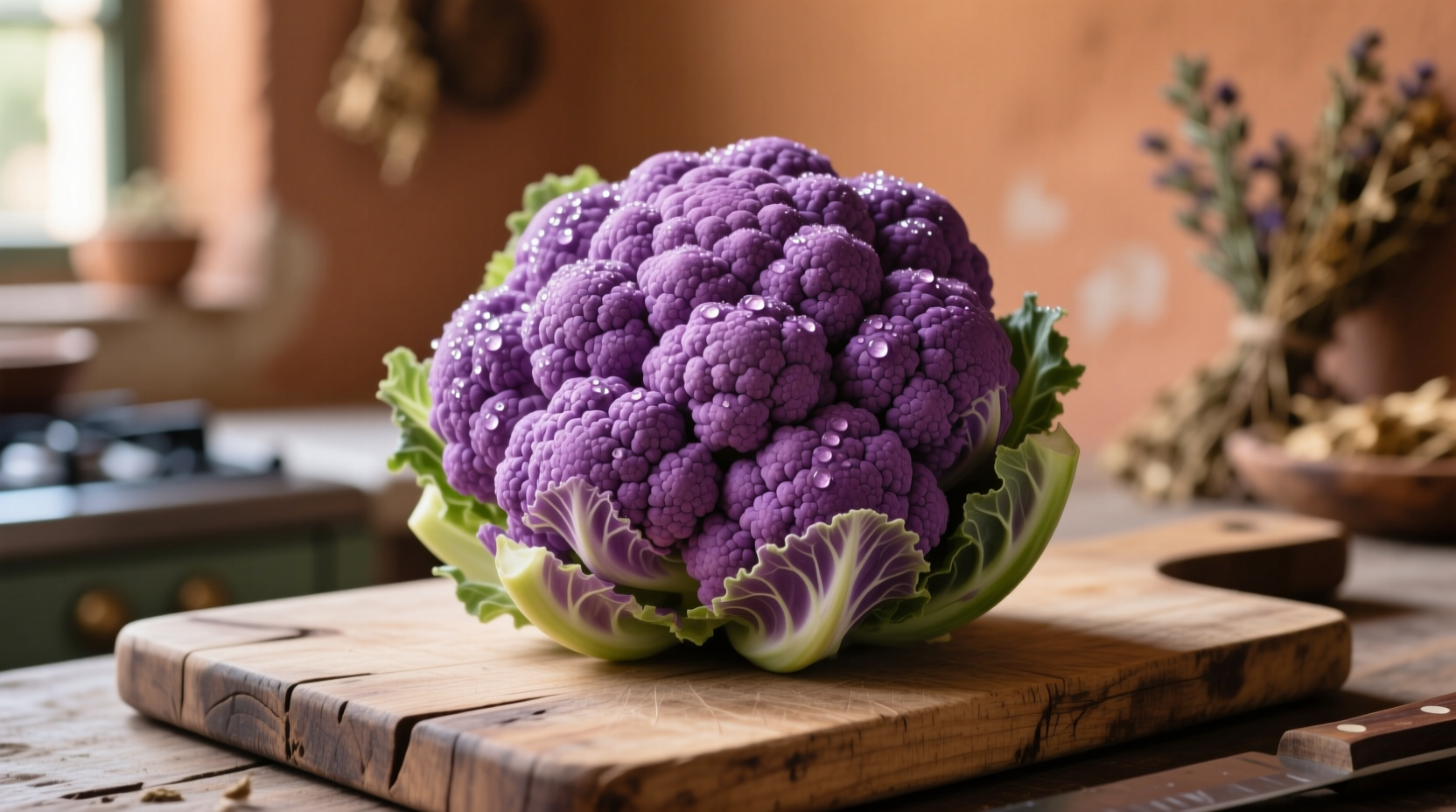Italian cauliflower isn't a distinct botanical variety but refers to traditional Italian preparations of regular cauliflower (Brassica oleracea var. botrytis), particularly the striking purple Sicilian cauliflower (Cauliflower Violetto di Sicilia) and Romanesco, which features fractal-like spiral patterns. These preparations highlight regional Italian cooking techniques that transform humble cauliflower into sophisticated dishes through methods like slow roasting, frying, and incorporating local herbs.
What Exactly Is Italian Cauliflower? Clearing Up Common Misconceptions
Many home cooks search for "Italian cauliflower" expecting a unique vegetable variety, but the reality is more nuanced. What's commonly called Italian cauliflower typically refers to either:
- Romanesco - The geometrically perfect, chartreuse-colored vegetable with fractal spirals
- Sicilian Violetto - Purple-hued cauliflower with slightly sweeter flavor
- Traditional Italian preparations of standard white cauliflower
Unlike generic supermarket cauliflower, Italian preparations emphasize technique over variety. Northern Italian cooks might braise it in broth with pancetta, while Sicilian recipes feature it fried with raisins and pine nuts in a dish called cauliflower alla Siciliana.

Identifying Authentic Italian Cauliflower Varieties
When shopping for what's marketed as "Italian cauliflower," look for these distinctive characteristics:
| Variety | Appearance | Flavor Profile | Seasonality |
|---|---|---|---|
| Romanesco | Chartreuse green, fractal spiral pattern | Nuttier, earthier than white cauliflower | October-March |
| Sicilian Violetto | Vibrant purple heads, fades when cooked | Sweeter, more delicate flavor | Winter months |
| Standard White (Italian prep) | Traditional white curd | Enhanced through cooking techniques | Year-round |
The Culinary Evolution: How Cauliflower Became Italian
Cauliflower's journey to becoming a staple in Italian cuisine spans centuries. Historical records show:
- 6th Century BCE - First mentioned by Theophrastus in ancient Greece
- 15th Century - Introduced to Italy from the Middle East, initially grown in Genoa
- 16th Century - Featured in Bartolomeo Scappi's cookbook for the Vatican
- 19th Century - Romanesco developed in the Lazio region near Rome
- Modern Era - Sicilian Violetto gains popularity in international markets
According to research from the University of Bologna's Department of Agricultural Sciences, cauliflower cultivation in Italy evolved significantly during the Renaissance when chefs began experimenting with different preparation methods that highlighted its versatility (unibo.it).
Why Italian Cooking Techniques Transform Cauliflower
The magic of Italian cauliflower lies not in the vegetable itself but in time-honored preparation methods that maximize flavor and texture:
Essential Italian Cauliflower Techniques
- Slow Roasting - Concentrates natural sugars, creating caramelized edges
- Frying (Fritto) - Creates crispy exterior while maintaining tender interior
- Braising with Aromatics - Infuses deep flavors from garlic, rosemary, and anchovies
- Raw Preparation - Thinly sliced in salads with lemon and olive oil
Professional chefs in Rome consistently emphasize that proper technique matters more than the specific variety. "The difference between ordinary and extraordinary cauliflower comes down to patience," explains Chef Marco Bianchi of Rome's La Pergola. "Italian cooks understand that cauliflower needs time to develop its full flavor potential."
Practical Guide: Cooking Italian-Style Cauliflower at Home
Transform your cauliflower into an authentic Italian dish with these chef-approved methods:
Perfect Roasted Cauliflower (Cavolfiore Arrosto)
- Preheat oven to 425°F (220°C)
- Cut cauliflower into 1.5-inch florets, keeping some stem pieces
- Toss with 2 tbsp extra virgin olive oil, 3 minced garlic cloves, and 1 tsp fresh rosemary
- Spread on baking sheet in single layer
- Roast 25-30 minutes until deeply caramelized, flipping once
- Finish with lemon zest and flaky sea salt
When to Choose Italian Cauliflower Preparations
Understanding context boundaries helps you select the right approach:
- Best for entertaining - Romanesco roasted with balsamic glaze
- Weeknight simplicity - White cauliflower sautéed with garlic and chili flakes
- Seasonal celebration - Sicilian Violetto in risotto during winter months
- Avoid when - Making pureed soups (standard white works better)
Culinary experts from Italy's Slow Food movement note that regional variations matter significantly. Northern Italian preparations often include butter and cheese, while southern versions feature tomatoes, olives, and capers (fondazioneslowfood.com).
Where to Find and How to Select Italian Cauliflower
Locating authentic Italian cauliflower preparations requires knowing what to look for:
- Farmers markets - Best source for seasonal varieties like Romanesco
- Specialty grocers - Look for "Violetto di Sicilia" or "Romanesco" labels
- Growing your own - Seeds available from Italian seed companies like Franchi
- Substitutes - When authentic varieties unavailable, enhance standard cauliflower with Italian ingredients
When selecting, choose heads with tight, compact curds and fresh green leaves. Avoid any with yellowing or soft spots. The purple varieties should have vibrant coloration throughout.
Bringing Italian Cauliflower to Your Table
Whether you've found authentic Sicilian Violetto or are working with standard supermarket cauliflower, applying Italian culinary principles transforms this humble vegetable. Focus on technique rather than variety, allow sufficient cooking time for flavors to develop, and incorporate quality Italian ingredients like extra virgin olive oil and fresh herbs. The result will be a dish worthy of any trattoria menu.











 浙公网安备
33010002000092号
浙公网安备
33010002000092号 浙B2-20120091-4
浙B2-20120091-4